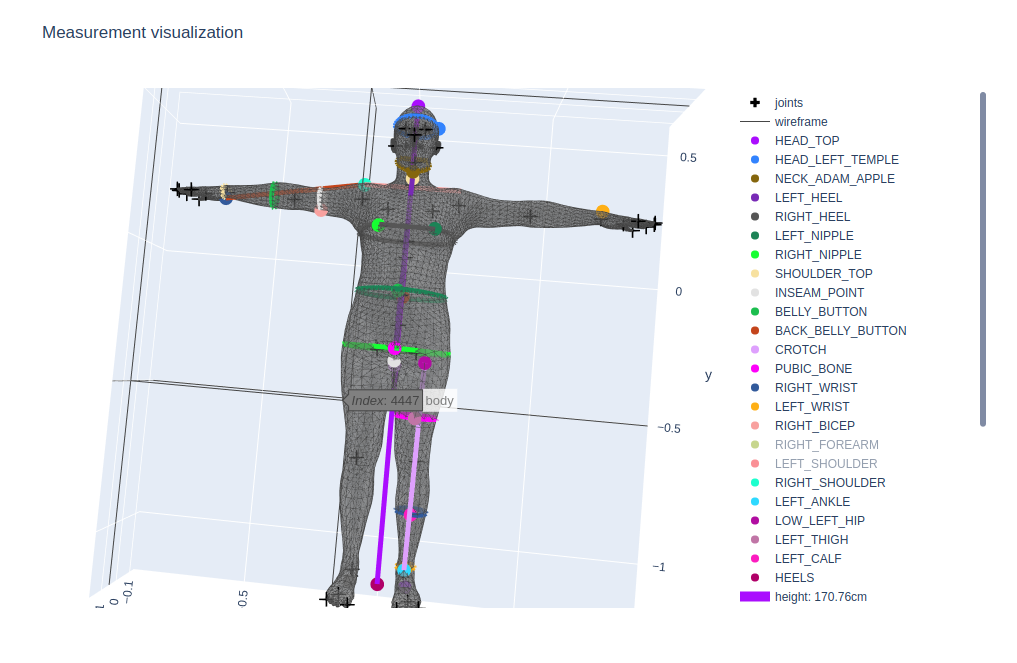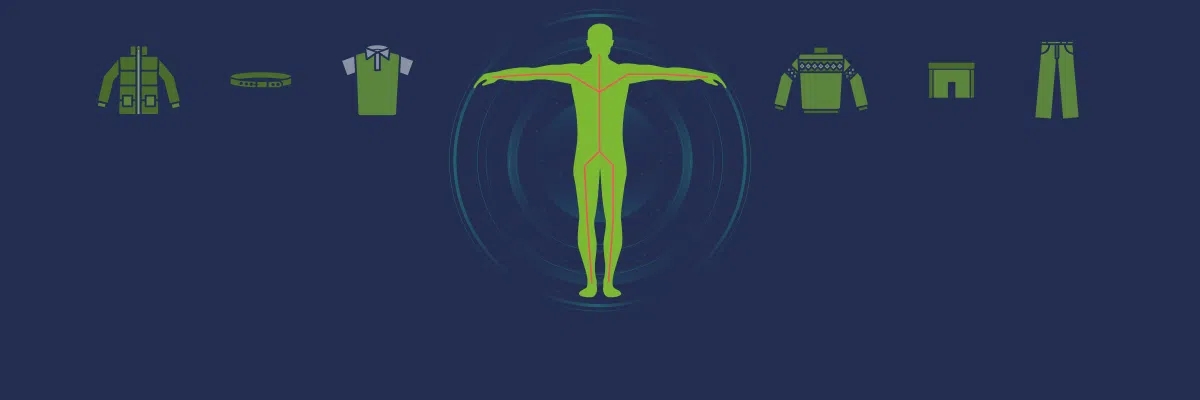Virtual Dressing Room Development Using SMPL Model
The technology for creating photorealistic 3D human models is becoming more and more widespread. These are such areas as cinema and animation, healthcare, retail, and fashion.
One of the most striking examples of the creation of a digital avatar at the dawn of technology was the case of the film "Gladiator", which was released back in 2000. At that time, during the filming, Oliver Reed, the actor who played the role of Proximo, died, and the team had to rewrite the script on the go. But the matter was not done with minor plot adjustments: for maximum credibility, a digital “lookalike” of Reed was created for a 3-minute episode. In terms of the current development of 3D animation, even now, 20 years later, Reed's digital understudy looks pretty decent. Then about 3.2 million dollars were spent on the development of the episode. Today, recreating a realistic model of a person costs ten times less. Below we will examine the SMPL model, one of the most successful in its niche, as well as its features and application in the field of fashion design.
Explanation of the SMPL Model
SMPL (Skinned Multi-Person Linear) is a rendered model of the human body that completely repeats the parameters, shapes, and curves of the figure, and the position of body parts when changing poses. The realistic 3D model is based on skinning and shape blending. The use of SMPL in fashion design programs and virtual fitting rooms involves working with AI: the study of the operation of the SMPL model is carried out by scanning thousands of bodies in three dimensions, which allows you to recreate the appearance of the body during deformation. So, for display, a set of pose parameters is used that control the rotation of the joints and set one or another form of the body.
The SMPL model includes the use of the LBS algorithm, which displays the deformation of the mesh when the position of the skeletal structures changes. The algorithm does not require large computing resources, and it provides the display of deformations in a wide range of poses. Support for all kinds of transformations means that the user can rotate the mesh geometry, as well as move and scale it. However, there is also a nuance to the LBS algorithm: in places of bending, volume can be lost, and in the case of curvature of skeletal joints, the so-called candy wrapper effect occurs.
Read also: 5 Python Libraries for 3D Human Poses Visualization
Virtual Dressing Room и SMPL Anthropometry
The functionality and versatility of the SMPL model are achieved thanks to the SMPL Anthropometry technology, which can be studied using the virtual dressing room application as an example. The program allows you to try on virtual clothes on the SMPL model, thus creating a virtual fitting. The function is widely used in the field of fashion design, e-commerce, and virtual fitting rooms.

Source: GitHub.com — SMPL-Anthropometry: Measure the SMPL body model by David Bojanić
How does it work?
To see how this or that thing looks on people of different body type, height, weight, etc., users configure the settings. As a result, you can see a believable, realistic representation of how clothes will fit a person.
SMPL Anthropometry is a data library through which you can fit virtual clothes with SMPL Anthropometry to models. With the help of technology, it is possible to control the forms and parameters of the model's pose, thereby simulating the fitting and fitting of clothes on the body in a certain pose. The regulation of body parameters lets visualize the appearance of people with different body parameters and thereby provide the user with a virtual fitting.
What tasks are solved using an application based on the SMPL Anthropometry model?
- Body reconstruction. In order to display the appearance of an avatar with clothes as reliably and realistically as possible, it is important to obtain model parameters that meet the measurements of the user who decided to use the virtual fitting. For this, body scanning technologies are used - 3D scanners or image-based methods that analyze two-dimensional photos or videos of the body.
- Modeling clothes. After the body shape parameters are obtained, you can run the modeling of garments and apply them to the body. The modeling of posture and appearance can be based on a physical or geometric approach.
- Virtual fitting. By simulating clothing and superimposing it on a user's digital avatar, it is possible to create a virtual fitting and thereby evaluate how the garments will look on the figure. A large selection of clothing styles, colors, and sizes makes it possible to understand whether the image fits the user, while there is no need to physically try on things. Understanding how it will look in clothes, the user is more thoughtful and reasonable in making a purchase decision and can leave valuable feedback to designers at the stage of clothing modeling.
Virtual Try-On Room with SMPL Anthropometry Case
The main purpose of the Virtual Try-On Room app is to fit virtual clothes into SMPL models to create virtual try-ons.
The application is based on AI and augmented reality technologies. The input data is a picture from a classic RGB camera without a depth sensor, a local video file, or an image. By scanning the user's parameters, the program creates their digital avatar and displays it on the screen. The avatar is then overlaid with two-dimensional images of clothing, selected at random.
The task was to allow users to adjust the parameters of the figure of the SMPL model and be able to simulate the fit of various items of clothing on people with different body shapes.
The SMPL (Skinned Multi-Person Linear) model is used as a representation of the human body. It is a parametric model that captures the shape and poses variations of the human body.
Using the SMPL Anthropometry library, we fit virtual clothes into SMPL models to create virtual fittings. The SMPL Anthropometry library provides functions for manipulating the shape and poses parameters of an SMPL model, simulating clothing, and rendering a virtual fitting. Adjusting the body shape parameters allows you to realistically display people with different body shapes, which allows you to personalize the virtual fitting.
This application can be used in e-commerce, fashion design, and virtual fitting rooms.
Main features:
- Body reconstruction
In the first stage, it is necessary to obtain the parameters of the SMPL model that best fit the shape of the body of the person the virtual fitting is being carried out for. This can be done using body scanning technologies, such as 3D scanners, or body shape assessment methods from 2D images or videos. - Clothing modeling
After obtaining the parameters of the figure, you can simulate virtual clothing and apply it to the SMPL model. Various modeling techniques can be used to model the behavior and appearance of clothing on a virtual body, such as physical fabric modeling or geometric methods. These methods take into account the body shape, posture, and physical properties of the fabric to realistically simulate the behavior of clothing. - Virtual fitting
After the modeled clothes are superimposed on the SMPL model, you can proceed to the virtual fitting. As a result of visualizing a virtual model with clothes, users can imagine how different items of clothing will sit and look on their figure. They can explore different styles, colors, and sizes of clothing without having to physically try it on. This can help make an informed decision before buying clothes online or make the design process easier for fashion designers.
Software Development Hub has experience with applications based on SMPL models. By introducing AI, ML, and augmented reality technologies, we will create a product that will meet the challenges of your business and solve user requests. Expertise, flexibility of approach, and the use of effective tools are the factors of excellent feedback following the results of our project.
Categories
Share
Need a project estimate?
Drop us a line, and we provide you with a qualified consultation.








